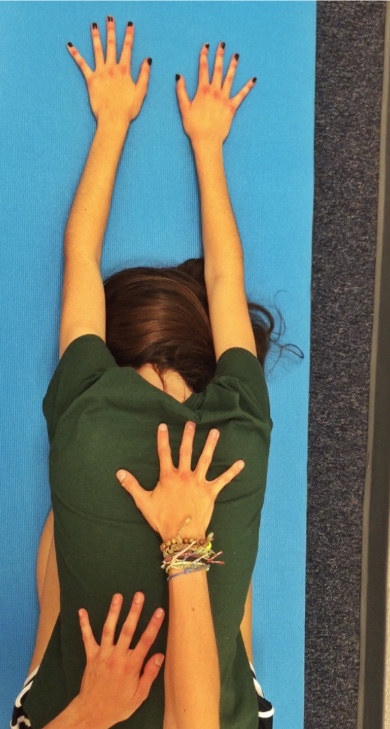Diary Of A Happy Yogi: Adjustments
Posted: September 23, 2015 at 1:58 pm
By: Ashley Whimpey
A pretty respectable yoga magazine recently published an article that offended me as a yogi. The source of my offense was a “Just Say No!” article discouraging yoga teachers from physically adjusting students in class. Before I began ripping the page out of every copy in the store, I tried to see where the other side could be coming from. Obviously the author stood on enough ground that the article was published and aimed toward the new yogis gathering information.
The author was arguing that teacher adjustments were wrong and potentially—even likely—dangerous. The stock photo accompanying the article was of a teacher standing above a student in down dog and using both hands to push their hips up and back for them. The student did not look to be in what I call the danger zone—the place where something is so seriously wrong it’s not at all humorous.
The article’s arguments were that a teacher would push students too far, force them into a place they weren’t ready for, and injure them for life. As a teacher, it is difficult to see someone struggle with anything when you have the answer or the fix right in your reach. There is so much we can’t do as humans in the most general sense, so it’s nice to do something when we can. Sure, some adjustments by some teachers in some places could be detrimental. There are unqualified people in every profession; they aren’t necessarily the norm or standard.
Adjustments off er many more benefits than the risk of a misinterpreted instruction. It is often difficult to translate the knowledge you have as a teacher to the student. This is especially true because there are so many different learning styles. Some students are auditory learners and need only the sound of my voice. Yet others hear “drop the shoulder from the ear in a neck stretch” three or four times, can see the example right in front of them, even meet my gaze and look totally engaged, but won’t drop the shoulder. When I gently tap their shoulder with my fingers and zap all of their attention to the spot where my fingers are, then they get it. This is an adjustment, and it wasn’t dangerous at all.
er many more benefits than the risk of a misinterpreted instruction. It is often difficult to translate the knowledge you have as a teacher to the student. This is especially true because there are so many different learning styles. Some students are auditory learners and need only the sound of my voice. Yet others hear “drop the shoulder from the ear in a neck stretch” three or four times, can see the example right in front of them, even meet my gaze and look totally engaged, but won’t drop the shoulder. When I gently tap their shoulder with my fingers and zap all of their attention to the spot where my fingers are, then they get it. This is an adjustment, and it wasn’t dangerous at all.
Adjustments aren’t always for students who are doing something wrong. They can also be for students who are doing something really right. Students lying pretty flat in a wide leg seated forward fold could benefit from a gentle press on their low back to help them go even deeper. Students in triangle reaching up may benefit from a slight tug on their wrist to pull their arm up higher than they can get it on their own.
I’m not saying it’s mandatory for students to accept adjustments all the time. There are days it’s nice to sit in the corner of the class, practice, and leave relatively unnoticed but still touched by the rhythm of the music and the soft energy of a good class. Still, it is not accurate to “just say no” all the time. It is not accurate to call out adjustments with a blanket statement of calling them horrible. Instead, seek out teachers and classes you trust. And then just say yes.


